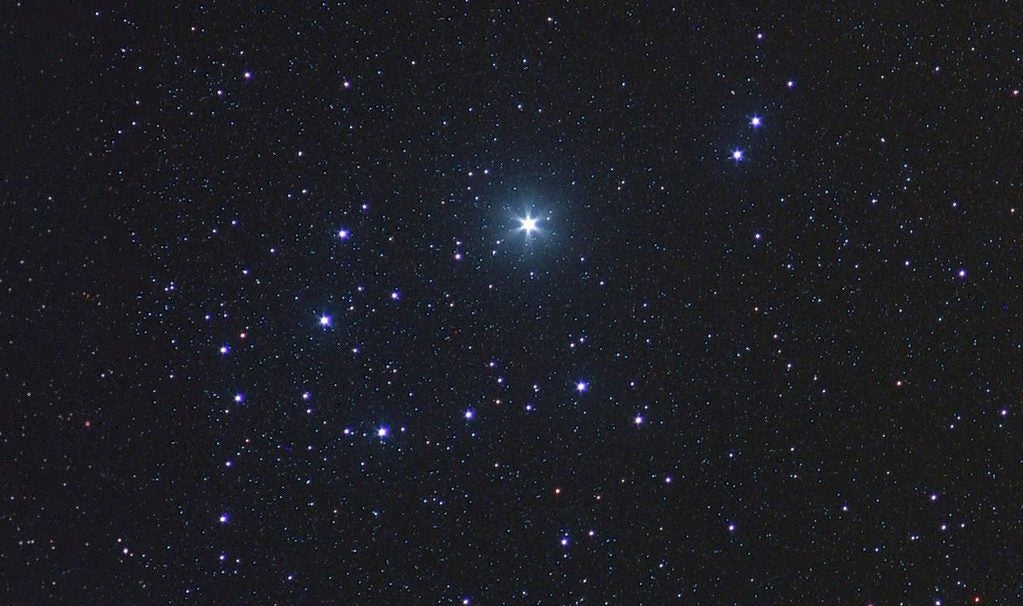
Also known as Melotte 20, Collinder 39, and the Perseus Moving Group, this open cluster is a loosely bound association of predominantly blue and blue-white type O and B stars spanning 6° of the northern autumn sky. Many of the cluster members are visible to the unaided eye and through binoculars.
The brightest of the bunch is 2nd-magnitude Mirfak (Alpha [α] Persei), a type F white/yellow supergiant. Other prominent naked-eye members include Delta (δ), Sigma (σ), and Psi (ψ) Persei. About 50 stars belong to the cluster, although some sources cite 10 times as many. These stars are only about 60 million years old. They are referred to as “moving” because they share a similar, albeit very slow, proper motion against more distant stars.
Although the brighter stars in the α-Persei Cluster had been known since our ancient ancestors looked skyward, Italian astronomer Giovanni Hodierna is credited as the first person to catalog it as a nebulous object in 1654. However, Sir Arthur Eddington was the first to recognize the Perseus Moving Group was a stellar grouping. This prompted British astronomer Philibert Melotte to include it in his 1915 catalog of star clusters. But it wasn’t until 1938 that American astronomer Robert Trumpler proved it to be a true cluster.
Two independent techniques to determine a star’s distance showed that the stars in the Perseus Moving Cluster lie between 557 and 650 light-years away.









